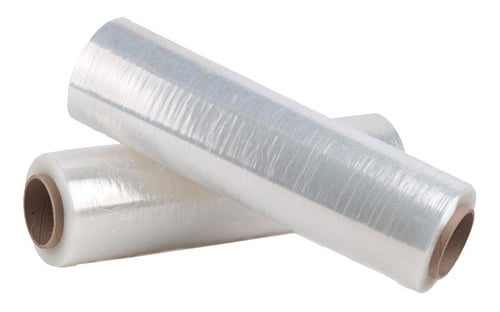
Shipping freight is becoming more and more common in the world of e-commerce. The types of products online merchants sell are no longer limited to things well suited to the postal and parcel networks. Many entrepreneurs who open online stores that sell larger items have little experience with supply chains and don’t have the knowledge of an experienced freight professional.
In this article, we’ll give you step-by-step instructions on how to palletize your freight shipments. It’s important to prepare freight shipments properly. It’s the first step you need to take to minimize the probability of loss or damage. If you don’t, not only is your shipment at risk, it’s also unlikely that you’ll receive any compensation from your freight carrier if something unfortunate happens.
If your shipment is comprised of boxes, make sure they are of sufficient size strength to withstand stacking. The content of the boxes should be properly packaged with a sufficient amount of packing material. There should be no unfilled space between the contents of the box and the top of the box. Make sure that each box is securely sealed.
Pallets are usually wood or plastic and are used to consolidate shipments for ease of movement. You can purchase them in a variety of standard sizes or make your own.
.jpg?width=500&name=Pallets%20(1).jpg)
Choose a pallet large enough that the items you’ll put on it won’t overhang the edges. Items that overhang the edges will likely be damaged.
You also want to pick a pallet size that isn’t unnecessarily large. Increasingly, LTL freight carriers are forcing their customers to use density-based pricing instead of traditional freight classes. Density-based pricing incorporates the size of the pallet. If you use a pallet larger than necessary you’ll pay a lot more for shipping.
Avoid pallets with widely spaced deck boards. Wide deck boards increase the risk of damage to the items you’re shipping. Also, make sure the rated capacity of the pallet is sufficient for your shipment.
Make sure each item is labeled before placing it on the pallet, The label should include your information and that of the receiver. Include the full addresses and phone numbers. If you know the Bill Of Lading (BOL) or PRO number for the shipment before you create the labels, include them too. Labeling each piece improves the likelihood of their recovery in the event the shipment is compromised and the pieces become separated.
Stack the boxes in columns. Start with the heavier boxes and progress to the lighter ones to improve load stability. Make sure the corners of the boxes are positioned on a pallet deck board. Doing so preserves the structural strength of the box so that it’s capable of supporting the weight of the items above it. Otherwise, the box may collapse and its contents damaged.
Don’t use an interlocking or rotating layer pattern. Your boxes are strongest along their edges and using an interlocking or rotating layer pattern will put unnecessary stress on your boxes where they’re weakest. Stack your boxes corner-to-corner, directly on top of each other to maintain their stacking strength.
Don’t form a pyramid with your boxes. Keep the top of the pallet as flat as possible to avoid damage from top loads.
Add a slip sheet every third layer. Slip sheets are thin pallet-sized sheets of plastic, corrugated fiberboard, or heavy paper board. Slip sheets help to evenly distribute the weight of the next layers and protect the layers below.
When you’re done placing your boxes on the pallet, add corner boards to each of the corners of the shipment. Corner boards increase the vertical strength of the shipment, protect the edges from damage, helps stabilize the load, and aids in load containment.
Use stretch wrap to stabilize the load and keep the contents of the shipment together.

Start by tucking the end of the stretch wrap between the bottom box and the pallet. Move upwards in a spiral pattern with a 50% overlap. Twist the stretch wrap every other rotation to maximize strength.
At the top, stretch the stretch wrap diagonally over the corners and then proceed to spiral back down the shipment the same way.
At the bottom, wrap around the shipment several times making sure that the pallet is included.
Consider purchasing a stretch wrap dispenser if you’ll be stretch wrapping shipments by hand. There are models available that will allow you to wrap your shipments without bending over.
You may want to place a sheet of corrugated fiberboard or heavy paperboard on top of your shipment prior to securing your shipment to the pallet. Doing so will help protect your shipment and help
Secure the shipment to the pallet with strapping. There are many types of strapping, including Poly Cord Strapping, Polyester Strapping (a.k.a Poly Strapping), Polypropylene Strapping, Stainless Steel Strapping, and Standard Steel Strapping. Which type of strapping you use will depend on the type of freight shipments you have and the environment they are subjected to.
Affix another shipping label on each side of the exterior of your shipment. Even though your pieces have been labeled, the labels may not be easily readable through the stretch wrap. Labels on the exterior of the shipment help easily identify it while in transit.
Eniture Technology specializes in helping e-Commerce merchants grow by providing useful information, digital marketing services, off-the-shelf apps that solve common problems, and custom programming services. Please contact us if you need help growing your online business or implementing the concepts presented in this blog post.
If you are interested in offering LTL freight as an option on your online store, take advantage of our free guide on LTL freight.
GET IN TOUCH
Phone: 404.369.0680
info@eniture.com
320 W. Lanier Avenue
Suite 200
Fayetteville, GA 30214
© 2015 Eniture LLC. All rights reserved.